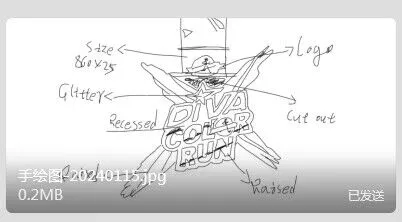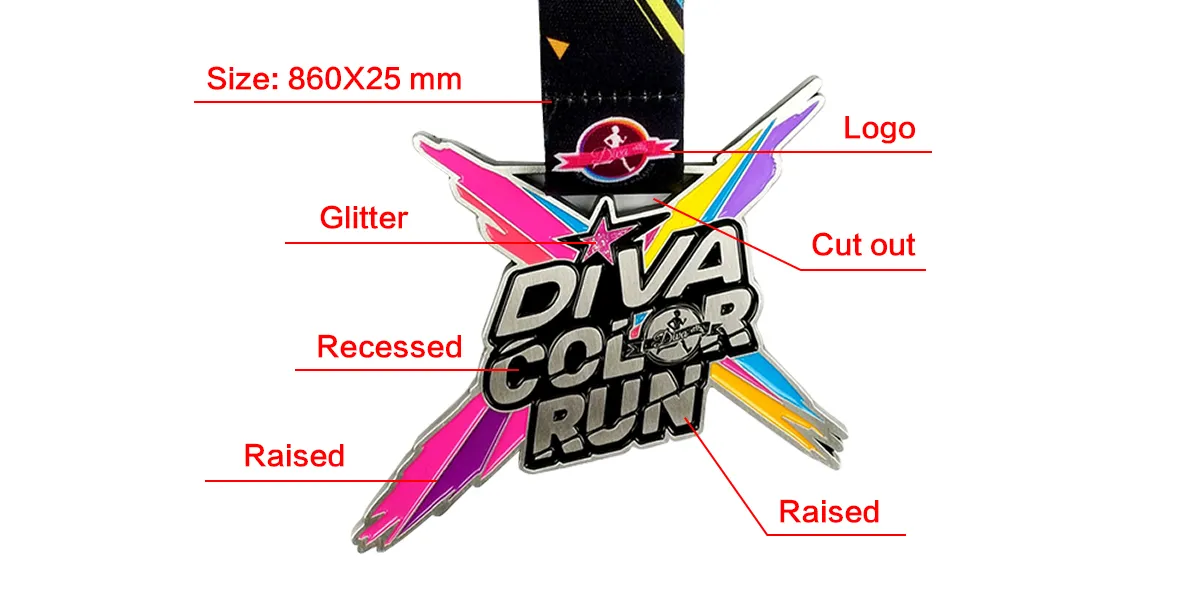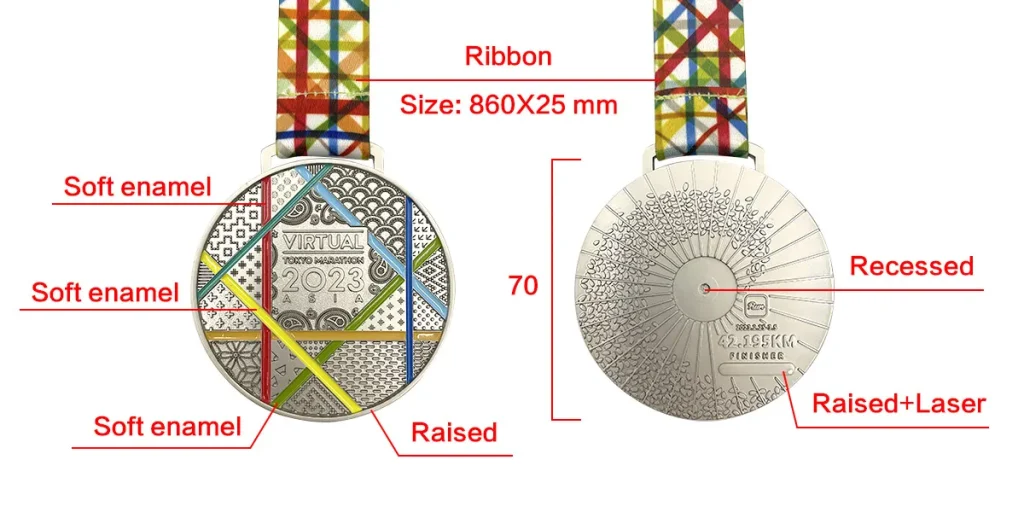Medal design is a creative endeavor. There are many key elements involved in designing a custom running medal. From the shape and material to the color and content of the design, every detail is important. As we all know, running medals is an integral part of an event, and the design elements need to fit the theme and atmosphere of the event; custom medals should be designed to drive the atmosphere of the participants.
A wealth of creativity and exquisite craftsmanship is the key to success in designing a customized medal that is desired. In various competitions, events and commemorative occasions, custom medals for awards are not only an award or decoration, but also an experience of the value and honor of the event. Rightfully so, no one likes monotony. Participants prefer well-designed medals to flat ones with no design at all. All in all, designing a successful running medal requires careful design and rigorous production.
The Basics of Medal Design
There are many aspects involved in medal design. With materials, sizes, colors, ribbons, and packaging, there are countless options for each part. With this in mind, we will explore the different types of medals, their uses, their main components, and the goals and principles of design.
1. Types and Uses of Medals
Every memorable event you can think of can use a customized medal. Whether you are organizing an event, a competition, or an activity, a well-designed medal makes your event more enjoyable.
There are a wide variety of types of customized medallions. Simply put, it can be any shape you desire. For example, when you need customized swimming medals, you’ll want them to be filled with swimming elements. We once designed medals for a beach event where the designer combined a medal with a bottle opener, and the event organizers and participants alike well received this particular medal.
The most common use of medals is to award the winner of an event or a dedicated person who has made a special contribution to the organization. For formal occasions, such as recognition events, we design traditional round medals to accompany the formal event. For some events or competitions, such as bike races or color runs, custom medals can be more lively and varied in shape.
2. Main Components of a Medal
Medals usually consist of medals and ribbons. Some medals and ribbons need to be attached together with clasps. In the case of a series of awards, the event director may also require a prize display stand. Elaborate packaging can also be part of the medals.
Planning and Conceptualizing the Award
Taking the time to research and understand the client’s needs properly allows for faster planning and design of a quality customized medal. By taking the time to conceptualize and prepare, designers can perfect custom designs in a variety of styles.
Rushing a customized award is not an option. With social media’s growing influence, event directors need to rethink their event strategy.


1. Research and Understand Client Needs
Every event has its theme, and event directors want to amplify the impact of the event. Award designers need to understand some basic questions before designing an award:
What type of event is it?
Does the event have a color theme?
What are the material requirements for customized medals?
Does it need to be environmentally friendly?
Does the award design need to be innovative?
What is the age group of the event’s participants?
What is your overall budget for event awards?
The more information the designer gets, the easier the award design becomes!
2. Creative Diffusion and Concept Development
Creativity is a magical thing. Organizers and participants love novelty, and medal makers need to incorporate new elements to satisfy the desire to collect medals.
In addition to fresh visual elements, there is a need to consider how the medals can help communicate the unique value of the event. Customized event medals can increase the publicity of an event and make it stand out from other event races.
All in all, designing impressive award plaques can star in multiple roles throughout the event lifecycle, keeping the event looking its best at all times. The same is true for competitors who do a good job of designing their medals.
Designing and Mocking Up Award Plaques
While designing the medals, it is important to consider the material, craftsmanship, and feel. Designing a surprise medal requires a combination of all the key factors. For example, wooden medals have to be designed in such a way as to avoid corrosion caused by excessive use of paints. At the same time, excellent hand feel provides a better experience, and the best balance of material, craftsmanship, size, and weight needs to be achieved.
1. Hand Sketching and Conceptualization
Medal designers first start with hand-drawn sketches to find inspiration for their medal designs. Medal sketches have an initial scale that includes materials, initial size, initial shape, and initial details. Some event planners also provide easy sketches.
The race director will always prefer more publicity, and the designer needs to be better considered. In addition to the sketches for the medals, there needs to be a better plan for the medal neck bands.
2. Digital Design
Taking the medals from sketches to fine detail requires a refined design through computers. The complete details of the medals are constructed through modeling, and the coloring and craftsmanship requirements of the medals are completed. Digital design allows you to see all the details of the medallion on the screen, size, thickness, color, and even 3D effects can be shown.

3. Drawing Feedback and Revision
A perfect drawing can complete the production of medals. When the designer and sales complete the medal design drawing confirmation, the customer needs to forward it for feedback.
After receiving the feedback and modification requirements from the customer, the designer will quickly complete the modification and submit it to the customer for confirmation. When the final artwork is confirmed, the production can be scheduled.
4. Design of Accessories
Custom neck ribbons for medals are an important part of the award design. In fact, the ribbon is an important promotional component. The planning team needed more places to promote the event, so they set their sights on the neckband. Similarly, the box was another promotional location they pursued.
Conclusion
The medal design is a deep study, and every step is critical. More than a simple combination of form and material, medal design represents respect for the event, recognition of the participants, and an extension of the brand image. Through the discussion in this article, we can clearly see that medal design needs to comprehensively consider multiple elements such as shapes, materials, patterns, and logos, and needs to be carefully designed according to the target audience, the theme, and the purpose of the event, and the brand identity.
Successful medal design cases tell us that creative play and practical skills are the keys to designing beautiful medals. Only through continuous exploration and innovation can we design eye-catching works that add more value and meaning to the event.
